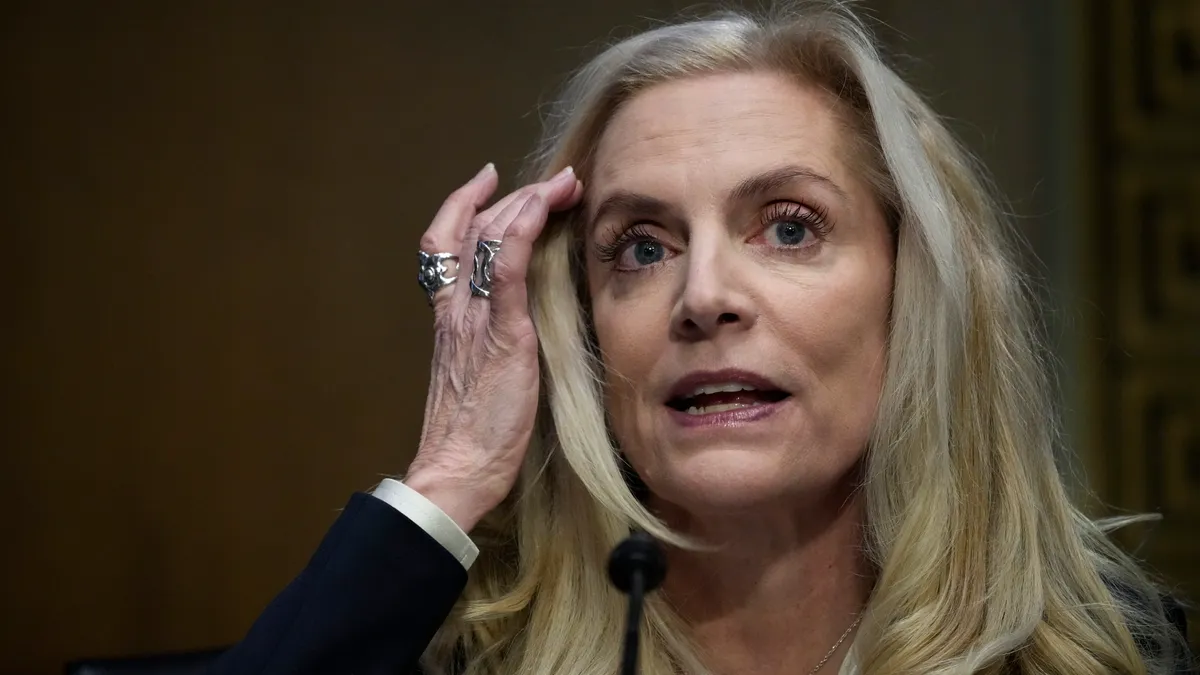Dive Brief:
- Federal Reserve Governor Lael Brainard said Tuesday that the central bank will quickly move to curb inflation, which rose last month to 8.5% — the fastest pace since 1981. “We’re committed to bringing inflation back down to 2%,” Brainard said, ranking the effort as the Fed’s “most important task.”
- Referring to central bank plans to increase the main interest rate and trim its $9 trillion balance sheet, Brainard said, “the combined effect will bring the policy stance to a more neutral posture expeditiously later this year.”
- Still, Russia’s invasion of Ukraine, COVID-19 lockdowns in China, the unpredictability of the pandemic and persistent supply chain bottlenecks complicate Fed efforts to achieve a “soft landing,” or reduce inflation without provoking a recession, Brainard said. “We’re in a period of very high uncertainty — I think it’s very important to emphasize that.”
Dive Insight:
Signs that inflation is speeding up and spreading throughout the economy complicate CFO efforts to manage risk, allocate capital, anticipate the cost of inputs and adjust their companies’ prices and wages.
The three-month moving average of the Atlanta Fed’s Wage Growth Tracker, which gauges nominal pay, rose last month to 6% from 5.8% in February, hitting the highest level since August 1990.
Meanwhile, price pressure has replaced “labor quality” as the No. 1 challenge for U.S. small businesses, the National Federation of Independent Business said Tuesday in a report on its Small Business Optimism Index for March. Expectations that business conditions will improve during the next six months hit a record low.
“Inflation has impacted small businesses throughout the country and is now their most important business problem,” NFIB Chief Economist Bill Dunkelberg said. “With inflation, an ongoing staffing shortage and supply chain disruptions, small business owners remain pessimistic about their future business conditions.”
More than seven out of 10 small business owners said they raised average selling prices — the highest reading in a data series begun in 1986.
In an effort to rein in price gains, the Fed will likely raise the federal funds rate by a half point at the end of a two-day meeting on May 4, according to analysts’ predictions and measures of investor expectations. Policymakers in March signaled the possibility of such an increase, according to minutes of their meeting released last week.
The central bank raised the benchmark interest rate by a quarter point last month in the first reduction of accommodation since 2018. It confronts the challenge of increasing borrowing costs enough to curb the highest inflation in four decades but not so high that it undercuts employment or economic growth, economists said.
The Fed will probably “decide as soon as May to start reducing the size of the balance sheet, in which case those reductions could come as soon as June,” according to Brainard, who is awaiting Senate confirmation to serve as the Fed’s vice chair.
The consumer price index (CPI) rose 8.5% last month, the Labor Department said Tuesday. Yet the Fed prefers to track the core personal consumption expenditures (PCE) price index. Core PCE surged in February to a record high of 5.4% compared with the prior year.
Russia’s invasion of Ukraine — “a seismic geopolitical event” — has pushed up energy prices, accounting for nearly 70% of the increase in the CPI, Brainard said during a webcast hosted by The Wall Street Journal.
“The longer the conflict persists, the more it escalates, the greater the potential risks to the upside on inflation and to the downside on activity,” she said.
A decline in fiscal stimulus, as well as signs of financial tightening such as rising borrowing costs for businesses and a nearly 2 percentage point increase in mortgage rates, will help cool demand, she said.
Brainard voiced confidence that the U.S. will avoid a recession, citing solid economic growth and strength in the labor market. Also, stable long-term inflation expectations are “enormously important and will be very helpful to us.”
“The U.S. economy enters this period of elevated uncertainty with a very strong labor market and significant underlying economic momentum,” Brainard said. “That I think bodes well for the ability to bring inflation down while also continuing to sustain the recovery.”












